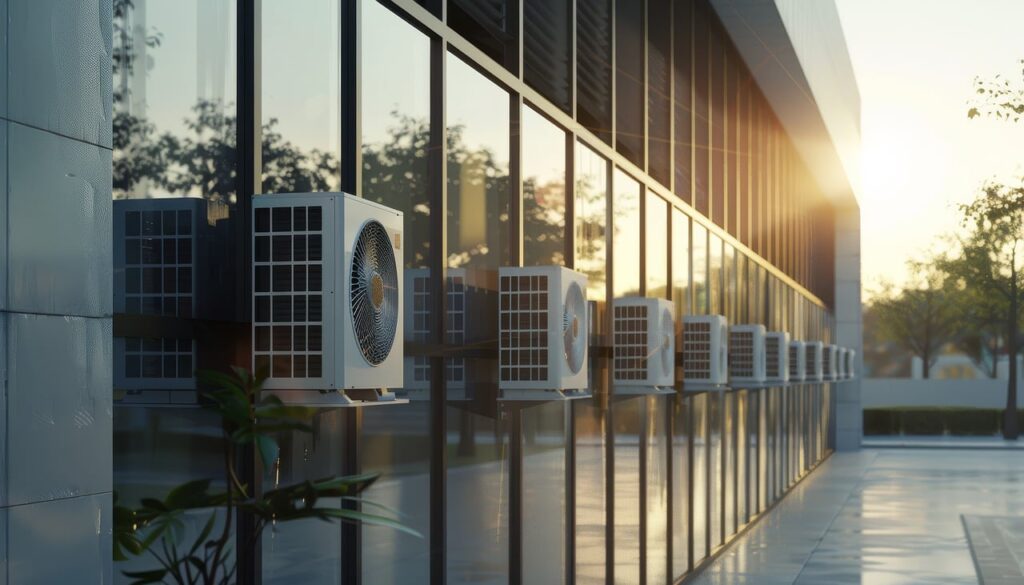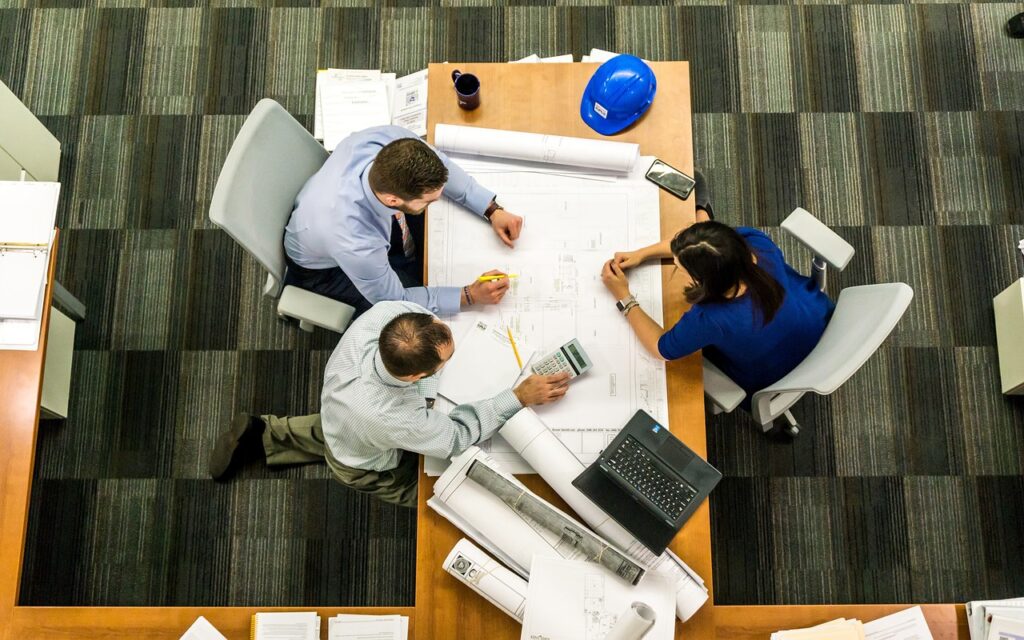Workplace mechanical systems play a crucial role in enhancing business operations by improving comfort, health, productivity, and cost efficiency for both owners and employees. Upgrading or installing new systems for enhanced ventilation, temperature controls, and heating and cooling can make a significant difference in the overall workplace experience for team members and customers alike.


Why Do Workplace Mechanical Systems Matter?
1. Enhanced Comfort and Productivity
Updated ventilation and heating and cooling are essential components of modern workplace mechanical systems that contribute to a comfortable atmosphere for employees. Advanced options, such as chilled beam systems and geothermal radiant heating for floors and walls, leverage new energy sources to increase system efficiency while reducing operational costs. These energy-efficient heating and cooling solutions are key to creating a welcoming workplace that benefits both employees and patrons.
Additionally, research shows a strong correlation between a healthy and comfortable office environment and increased employee productivity. One study by the University of Oxford’s Business School demonstrated that happier employees — those working in comfortable and positive environments — were not only more productive, but also achieved 13% higher sales compared to their less happy or comfortable counterparts. Interestingly, these employees didn’t necessarily work more hours; instead, they used their time more efficiently, suggesting that a comfortable and positive atmosphere directly impacts productivity through increased focus and job satisfaction. (World Economic Forum, 2019).
2. Efficient HVAC in Older Commercial Buildings
Many older commercial buildings can greatly benefit from improvements to workplace mechanical HVAC systems. Modern HVAC systems can provide employees with a reliable and safe facility, while also improving system efficiency and potentially lower maintenance and utility costs for the building owner.
For instance, geothermal heating and cooling is a technique that utilizes the constant temperature of the earth, providing an efficient way to heat and cool buildings. The earth acts as a giant heat source and heat sink, which helps maintain stable temperatures, reducing energy consumption and improving overall efficiency. That’s a win for both a building’s owner and its employees!
Geothermal systems can be used in several ways including VRF, chilled beam, VAV, and radiant heating for floors and walls. Harnessing new sources of energy helps to expand the availability of new options.
3. Creating Comfortable Environments in Various Settings
Whether it’s a hospital, university, museum, or commercial complex, reliable workplace mechanical systems are vital for maintaining a comfortable and efficient environment. Hospital administrators can enhance comfort by upgrading HVAC systems to create cozy, welcoming spaces for patients. Increased comfort and enhanced ventilation provides a better healing environment.
Similarly, educational classrooms benefit from modern heating and cooling systems, which help to maintain a consistent and comfortable temperature throughout the year and create better learning environments for K-12 through university students and educators.
For business complexes, enhanced workplace mechanical systems not only improve energy efficiency but also help prevent issues like mold and mildew by properly maintaining indoor humidity levels that cause condensation. This is especially crucial for historic buildings such as museums, where maintaining the integrity of artifacts and providing comfort for visitors is a priority.
Considerations When Upgrading Mechanical Systems
1. Leveraging Building Information Modeling Tools
Building Information Modeling (BIM) software is a powerful tool for designing and implementing effective workplace mechanical systems. Using a 3D model, Engineers can visualize design options and develop new systems for HVAC that maximize efficiency and effectiveness. This modeling approach allows modifications to be made virtually, ensuring that updates can be communicated seamlessly to construction teams, thereby improving coordination and reducing costly errors.
2. Addressing Building Envelope Performance
Improved building envelope design (think insulation and low-e glass) can help manage temperature fluctuations, further increasing the comfort of building inhabitants and reducing energy costs. For example, entryways are often a source of heat loss or gain in office buildings, which impacts overall energy efficiency and can cause unpredictable fluctuations in temperature. To address this, an Engineer may suggest creating a vestibule whereby interior doors are installed about 10 feet from exterior doors to significantly reduce unwanted heat exchange.
3. Minimizing Disruptions During HVAC Upgrades
For facilities like hospitals, installing new HVAC systems as part of a remodel can be done with minimal disruption to daily operations if proper thought is put into phasing of work. Engineers work alongside architects and contractors to design workplace mechanical systems that not only provide dependable service but also incur low operational costs. The goal is to create systems that are reliable, efficient, and effective, tailored to the unique needs of each facility.

4. The Role of Facility Operators and Professional Engineers
Facility operators have the critical responsibility of ensuring that buildings are adequately heated, cooled, and properly plumbed. Professional Engineers can assist by designing improvements to workplace mechanical systems that meet these needs, ensuring that all aspects of the facility are optimized for both performance and cost-effectiveness.
For facilities with outdated steam or hot water boiler plans or chilled water plants, modern upgrades can significantly enhance performance. Engineers can inspect the current systems and recommend changes that will boost efficiency and reduce environmental impact, bringing older systems up to modern standards. While an Architect designs the building, Mechanical Engineers collaborate with the Architect and Facility Operators to design reliable HVAC systems that will incur lower costs and provide reliable service.
Learn More About Optimizing Workplace Mechanical Systems
Interested in learning how your mechanical systems can be optimized for better comfort and performance? For all your building system design needs, reach out to Axiom Engineering Group on our website or give us a call at (406) 542-2849. Our team is ready to help you create resilient, efficient, and comfortable environments that support your business goals.
Sources
- World Economic Forum, 2019. “Happy employees are more productive, research shows.“
- Images by Pixabay, 2024.
Published on 11.20.24, Shannon Frizzell.
